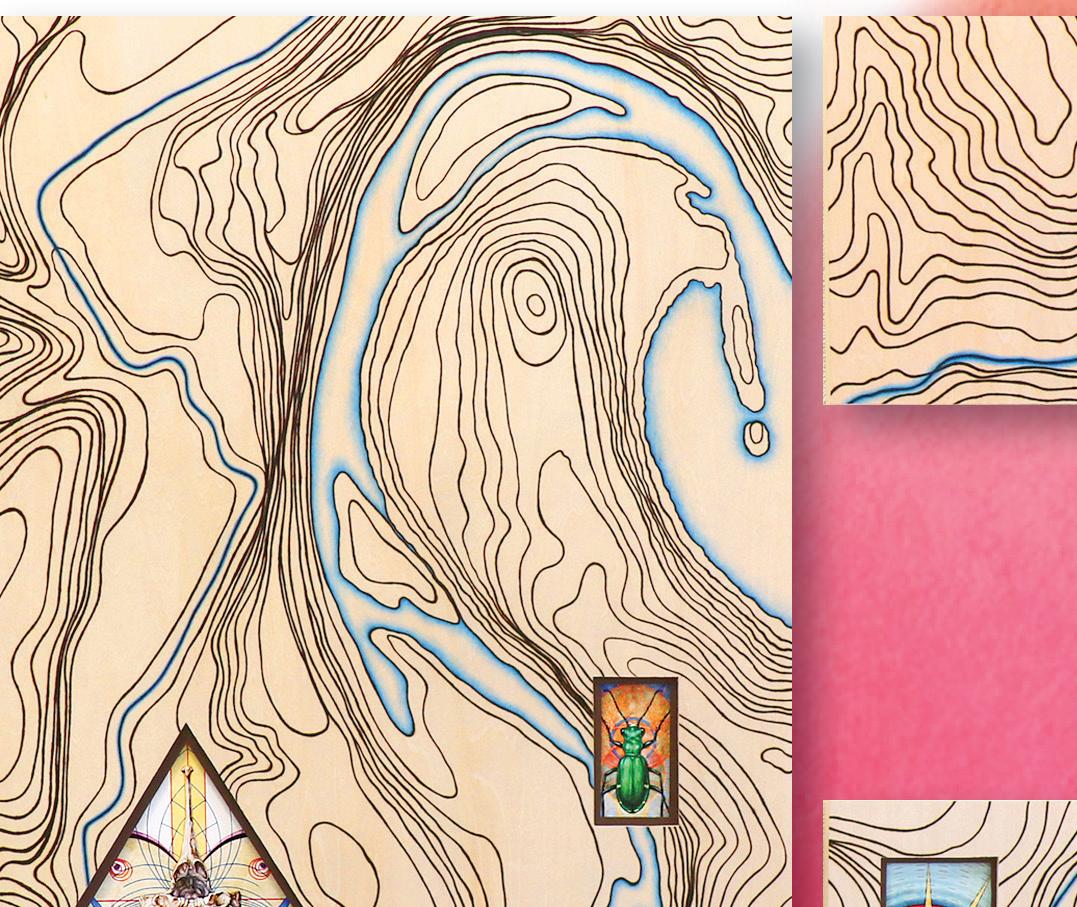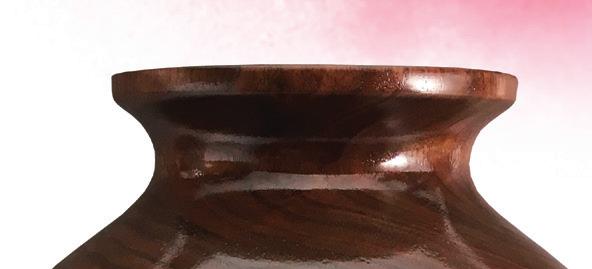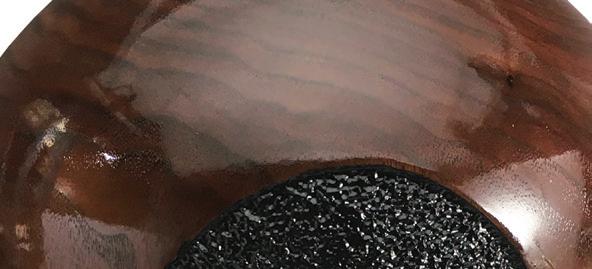
5 minute read
20 Artists, 20 Parks
CELEBRATING
IN YOUR OWN BACKYARD











20 ISU artists collaborate to showcase Iowa’s state parks







BY CAROLE GIESEKE



ASTONE BRIDGE by Nancy Thompson, Lacey-Keosauqua State Park, Keosauqua highly anticipated artistic celebration of the 100th anniversary of Iowa’s state parks came at exactly the wrong time. e creations of 20 Iowa State University artists were installed in Des Moines’ Polk County Heritage Gallery on March 13, only to have the exhibit hall shut down due to the Covid-19 pandemic.

CONTINUED ›



Nancy Thompson (’01 art & design, MFA ’08 integrated visual arts) was the show’s coordinator. Her passion for the state parks project started a decade ago, after she received her master’s degree. “Thinking back to what excites me as being an artist, it’s always been landscape,” she said. “I started visiting some of the national parks, and I also realized I live here in Iowa so wanted to start in my own backyard. I started thinking about Iowa parks and how many of them there were and how few of them I’d ever visited.” She visited more than two dozen state parks and exhibited her resulting artwork throughout the state. Then, in 2016 she began to work on a new project showcasing Ledges State Park near Boone. She collaborated with a number of colleagues on the project and then, looking toward the state’s 100th anniversary of its parks, proposed a larger showcase. An associate teaching professor of art and visual culture in the College of Design, Thompson worked with the Iowa Department of Natural Resources and the Iowa Arts Council to create an artistic centennial celebration titled “20 Artists, 20 Parks.” Twenty artists from Iowa State’s Colleges of Design, Liberal Arts and Sciences, and Agriculture and Life Sciences were matched with 20 state parks. Each artist spent time in their chosen park during the summer of 2019, working closely with park rangers to learn about the parks’ histories and ecosystems. The traveling exhibition was to have been on public display at the Heritage Gallery last spring, followed by the Dubuque Museum of Art during the summer. Both exhibits were canceled. The show is still tentatively scheduled for the Clarinda Carnegie Art Museum Sept. 30 through Jan. 8 and at the Sioux City Art Center Jan. 30 through May 9, though the possibility remains that the exhibitions will be canceled due to the ongoing pandemic. Artists were also originally scheduled to present public programs in their selected state parks during the summer and fall, but most of these were also canceled. Thompson was looking forward to inviting other Iowa artists to paint with her this fall in LaceyKeosauqua in southeast Iowa, a park she’d never visited before beginning this project. “I was so glad I got that park,” she said. “It met all my expectations and more.” As many Iowans sheltered in place at their homes during the spring and summer, the importance of both art and nature were heightened.

LAKE OF THREE FIRES quilt by Amy Harris, Lake of Three Fires State Park, Bedford “Being out in nature is so important for us, especially with this pandemic with people cooped up,” Thompson said. “We need the sun; it’s very healing. We’re living beings, and we’re part of this world. Everything is interconnected. We can’t exist without the other.”
DOCKSIDE by Jennifer Drinkwater, Pine Lake State Park, Eldora






Artist spotlight: Kim Moss
For “20 Artists, 20 Parks,” Kim Moss, ISU assistant professor of art and visual culture, created a 2-by-3-foot centerpiece wood panel fl anked by four smaller square-foot panels with isolines – used to denote elevations on a topographic map – burned into the surface. She cut windows into the wood and placed inside them images of organisms and objects created with watercolor, colored pencil, and digital rendering.
She attached pegs to the window coverings to allow visitors to lift each one away from the landscape, revealing what is often unseen. On the back of each cover is a poem Moss wrote related to the image. “Iowa has these pockets that are really amazing vessels for what has happened in the landscape over time,” Moss said. “Backbone and northeast Iowa have interesting topography where glaciers have carved some of the land and waterways and left other areas untouched. “When people visit these special places in
Iowa, I want them to slow down and notice all the elements – something really small like a beetle on the ground or looking overhead and seeing an owl. If you really look, you can discover an entire world within a square foot.” Moss is the coordinator of Iowa State’s biological and premedical illustration program.

– From spring 2020 Inspire alumni newsletter, by Heather Sauer, College of Design communications specialist

THE BEAUTY WITHIN by Rob Wallace, Lake Darling State Park, Brighton






